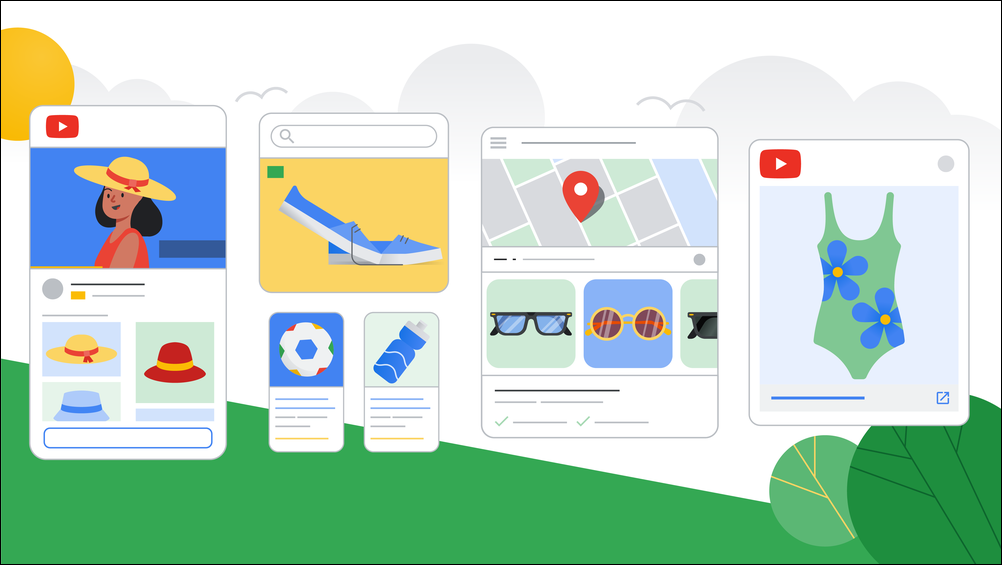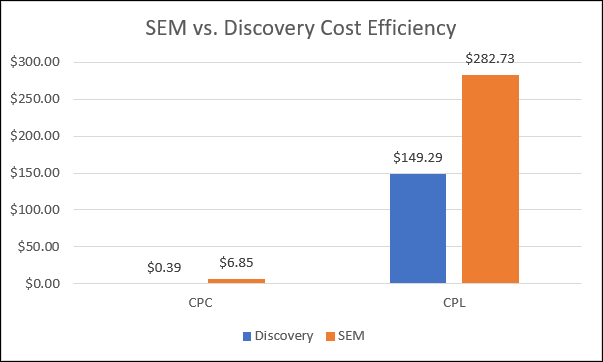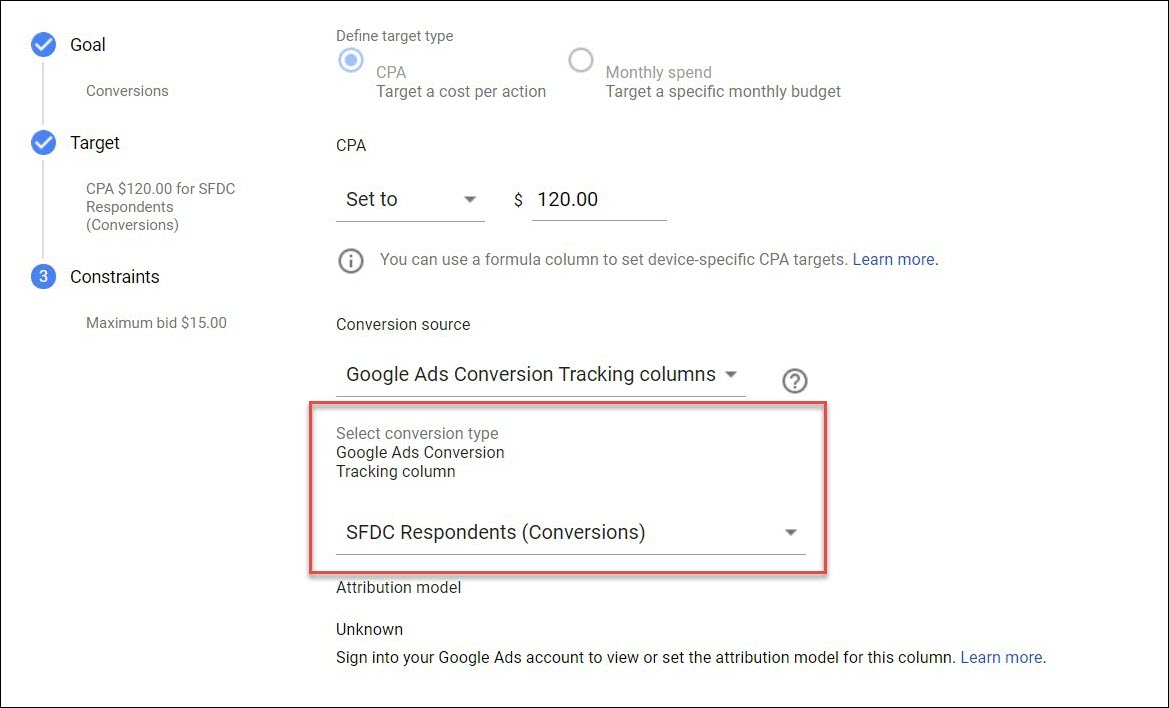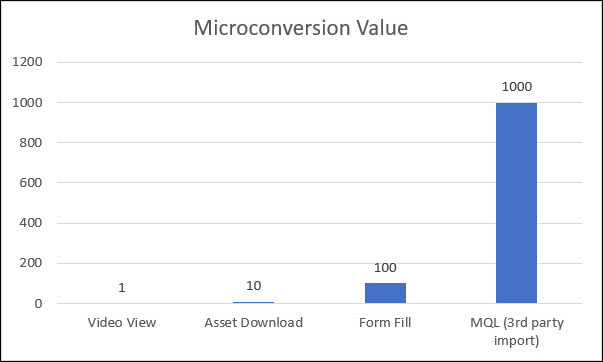Automation in paid search is here to stay. It saves time for the PPC manager, freeing them up for more strategic tasks.
That said, it often feels like automation wasn’t designed for B2B advertisers.
Take Performance Max, Google’s newest campaign type, for example.

See anything there that looks remotely related to B2B?
Google is pushing Performance Max as the next best thing in campaign automation, yet has alienated B2B advertisers with the imagery used to describe it.
So, are B2B advertisers doomed to manual campaign management? Of course not.
In this article, you’ll learn 5 keys to successful B2B paid search automation.
Key #1: Build Your Funnel.
Let’s take a step back for a moment and talk about audiences. Audiences are one of the most important signals used in targeting PPC ads.
That’s right – it’s not just about keywords anymore. And in B2B, keywords often fail us because they’re ambiguous. (For a great read on how Google interprets ambiguous search queries, check out this article by Bill Slawski) We need audiences as an additional signal to the search engines on who we want to reach.
But finding B2B-focused audiences can be challenging. The search engines don’t offer much in the way of in-market or affinity audiences focused on B2B, and few B2B advertisers have first-party audience lists that are large enough to use for targeting.
Not to worry.
Here’s where the Google Display Network (GDN), YouTube, and Discovery campaigns come in.
B2B advertisers often shy away from upper-funnel tactics like GDN and YouTube because these channels are not great at driving leads. But when you’re trying to build your funnel, leads shouldn’t be a KPI. You’re focused on building audiences who’ve interacted with a particular type of content.
For example, let’s say your company has a video that talks about common problems in your industry, and how your product or service solves those problems. You could set up a YouTube campaign featuring the video, and create an audience of people who viewed at least 50% of the video.
Now you have an audience that has expressed interest in your product or service.
Similarly, you can promote your content in GDN and Discovery campaigns, and build audiences of people who came to your site and interacted with the content.
Discovery campaigns can be particularly effective not only in building audiences but driving leads. Here’s an example of how Discovery campaigns performed compared with Search campaigns for a B2B client.

Discovery drove leads at a significantly lower cost than search, simply because its CPC was so much lower. These campaigns can be highly effective not only for top-of-funnel but mid-funnel as well.
Key #2: Import Third-Party Data.
It’s important to carefully track results for all your paid search campaigns, regardless of the funnel stage. However, it’s rare for B2B buyers to come to a website and make a purchase online. Instead, B2B advertisers are usually tracking leads, by means of a form-fill or other action on a website.
The challenge is, not every form-fill results in an actual lead.
Some percentage of form-fills are bogus, with users giving fake information.
Another percentage are low-quality leads, either from consumers, students, or other users who aren’t serious about buying.
B2B advertisers need a feedback loop to tell the search engines whether the leads they’re getting from paid search are quality leads or not.
The best way to gauge lead quality is by importing third-party data from your CRM back into the engines.
Google first launched the capability to import Salesforce lead data back in 2016. Since then, they’ve added thousands of data connectors that advertisers can use to pull in data from their CRM system.
CRM systems are usually the source of truth for B2B advertisers. Importing data from the source of truth allows PPC managers to view data on actual business metrics, rather than just form fills that may or may not turn into leads.
And if you get enough CRM conversions, you can use them for Smart Bidding.

This screenshot is from SA360, but you can also use CRM conversions for Google Ads bid strategies, as long as you have them marked as Primary conversions.
Key #3: Use Portfolio Bid Strategies.
Often, B2B campaigns have low conversion volume. When you’re selling six-figure business software, seven-figure medical equipment, and the like, it’s not unusual to only see a handful of conversions each month.
This can pose a challenge for Smart Bidding as it requires at least 20 conversions per month to be effective.
Not to worry.
Using a portfolio bid strategy is a good way to combine similar campaigns into a single bid strategy with enough conversion data to use third-party data for Smart Bidding.
Be careful to make sure the campaigns have similar performance and objectives, though. Don’t combine brand and non-brand campaigns, or campaigns with very different CPAs or goals.
Key #4: Try tROAS With Micro conversions.
As a B2B advertiser, you may have felt left out of several Smart Bidding options, including tROAS. It’s difficult to set a value for a lead, as some leads will turn into multi-million-dollar customers, some will turn into six-figure customers, and some will never become customers at all. And assigning a final value to a lead can take 18 months to two years.
It is possible for B2B advertisers to successfully use tROAs, though.
The key is to use micro conversions.
Let’s say you have four actions you’re measuring: video views, asset downloads, form fills, and MQLs from a third-party import.
Many B2B advertisers get hung up on assigning value to each conversion. Remember, you just need to assign a relative value, not an actual value.
In this example, an MQL is worth 1,000 times what a video is worth.

By assigning a relative value, you’re telling the search engine which conversions matter most to you. The tROAS strategy will look to maximize the value of conversions, not just the number of conversions – thereby improving the quality of the leads it’s driving.
Key #5: Send the Right Signals.
In order to get the best possible results from paid search, it’s important to send the right signals.
Keywords are one signal. It’s important to choose the right keywords for B2B search campaigns in order to weed out consumer queries.
When thinking about keywords, don’t forget about negative keywords. I’m always surprised by the number of PPC campaigns in new client accounts that don’t have any negatives.
Negative keywords are crucial for B2B campaigns. Go through your keyword research, find all the consumer queries, and add them as negatives.
We talked about audiences earlier. Always, always add audiences for observation.
You should make sure they’re relevant, of course, but it doesn’t hurt to add all the relevant audiences you can find. Monitor performance, and adjust as needed. Audience performance review should be part of your regular optimization cadence.
Don’t forget to add negative audiences, too. If there are audiences you don’t want to reach or audiences that have performed poorly, add them as negatives.
Final takeaways
Remember, you’re telling the automation who you want to reach, and who you don’t want to reach. The more accurate signals you can send, the better your performance will be.











